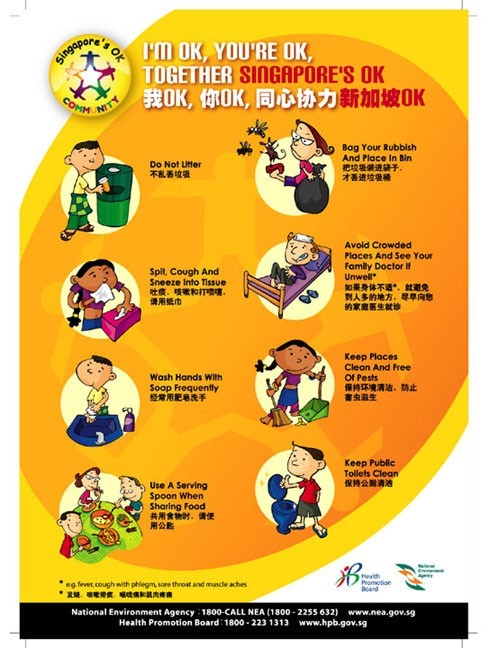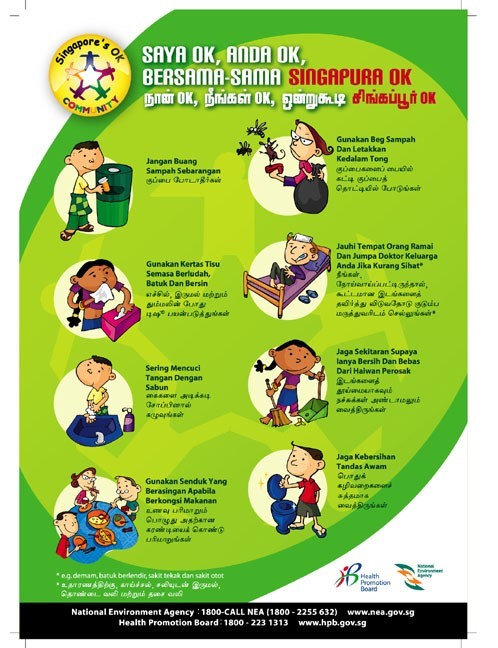With the ongoing global COVID-19
outbreak, public health policy is being put to the test. To educate people and
modulate their health, sanitary, and hygienic behavior, it’s crucial that
policymakers communicate effectively. Public health guides inform and protect people
in times of disease outbreak as well as in daily life. The ongoing fight
against diabetes, coronaviruses, and even the common cold is furthered by public
health messaging and this is why people of all languages and tongues must be
reached. Singapore provides an inspiring example of well-enacted multilingual
public health education, giving us hope that the global public health response
system can be solidified across the world, ensuring a safer, cleaner, and healthier
future.
Singapore’s public health system is a stand-out among Asian cities like Tokyo, Seoul, and Hong Kong who are battling this coronavirus. In addition to drawing praise from the World Health Organization (WHO), the city-state was recently exemplified as a gold standard by Harvard’s T.H. Chan School of Public Health. With near-perfect detection of infected persons, Singapore has stayed consistent with its noteworthy performance in SARS outbreak detection.
Singapore’s highly praised policy response can be explained by its public health approach. Specific measures originate in a world-leading ethos. Dr. Teo, the Dean of Singapore’s leading school of public health, remarked in 2018 that health systems need to be integrated across disciplines and stakeholders. Singapore’s pressing issue with diabetes, he said, should be approached as more than just a medical problem but rather as a social issue. Behavioral causes of diabetes are correctable via education, and so should be, “an equal burden on the shoulders of the education minister as it is on the health minister.”
As a nation with four common
languages, Singapore’s approach to the distribution of public health material reminds
us of the necessity to be inclusive. Although the working language of
government is English, the official language of the country is Malay – an
effect of Singapore’s former British colonial status. Singapore’s other two commonly-used
languages are Chinese and Tamil, two very different languages which require
accurate translation and cultural adaption to their respective audiences. While
the Ministry of Health’s website is in English, one is able to search in
multiple languages, allowing speakers of many languages to navigate the website
to find public health information. The multi-lingual strategy that Singapore
employs is illustrated in these public health-hygiene posters.
Reputed for remarkably extensive public education and messaging campaigns, Singapore’s Health Promotion Board (HPB) targets public hygiene behavior, which includes the washing of hands, covering of sneezes, and proper disposal of household rubbish. Through multilingual messaging, the wider public is encouraged to live healthily. Another interesting example from the HPB is an app that incentivizes exercise and has been worked into a major national initiative called Smart Nation. The “National Steps Challenge” helps participants exercise with Fitbit technology that utilizes artificial intelligence.
Looking outside of Singapore, we
can find other examples of multilingual public health education. In the United
States, COVID-19 related guidance and communications materials are available in
Chinese and Spanish. In addition, the WHO produces field manuals for preparation
and management of public health outbreaks in Arabic, Chinese, French, Russian,
Spanish, and English. The UN further contracts translation companies for tailoring
materials to different languages, cultures and levels of education, to reach
their diverse target populations effectively.
When an epidemic befalls a city, its public health response is truly tested. Whether struggling with COVID-19, or with diet, exercise, and hygiene, public health messaging must reach everyone regardless of the language they speak. It is crucial to strengthen our cities’ responses because when it comes to global public health we are only as strong as our weakest link. Singapore’s diverse population requires multi-lingual public health messaging and it will continue to be successful where its disease management takes both health and education into account. Accessible public health messaging in Singapore and the US provides hope that our global public health response system can be strengthened by reaching everyone in every tongue.
- Dr. Hope


